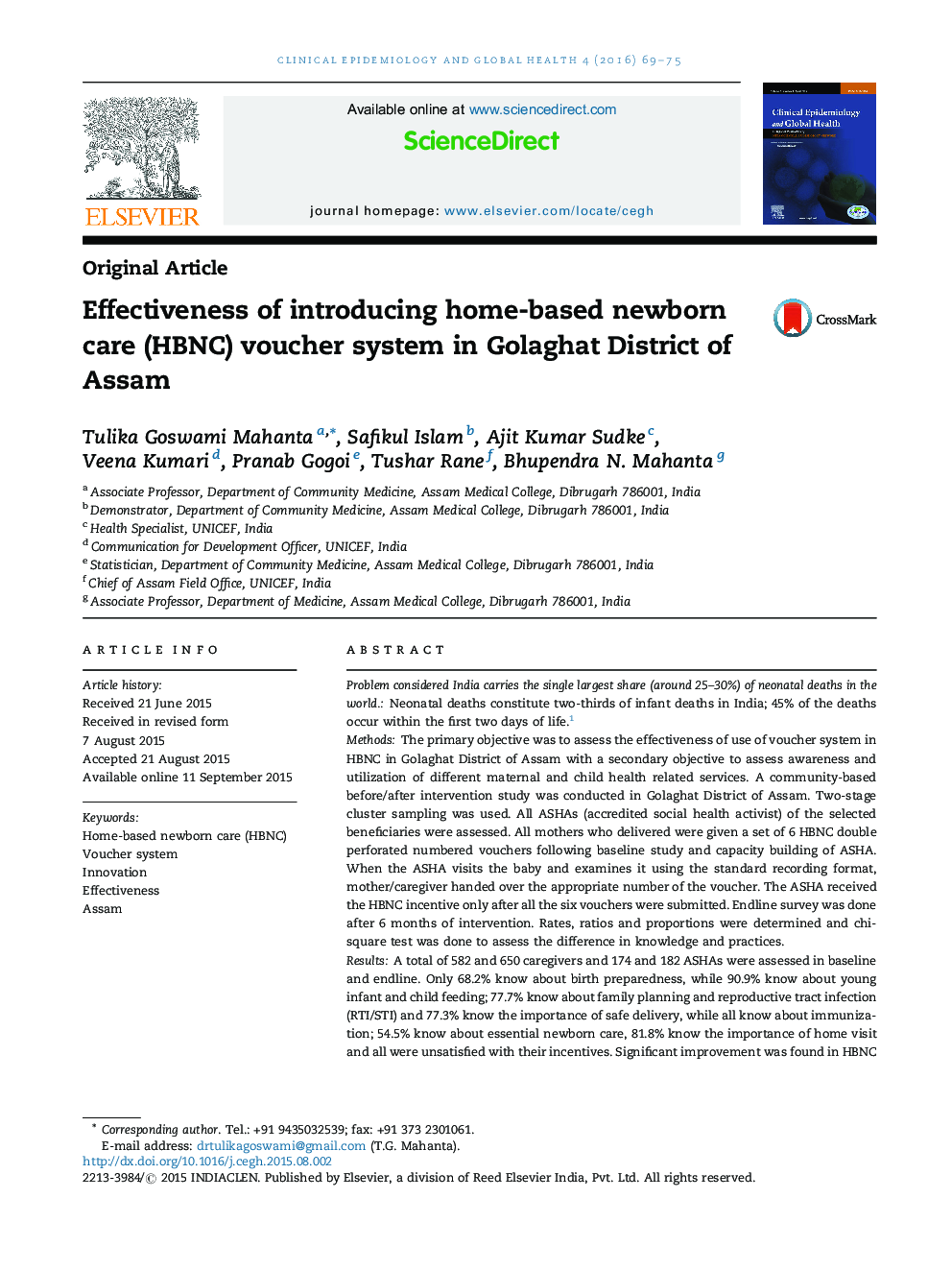| Article ID | Journal | Published Year | Pages | File Type |
|---|---|---|---|---|
| 3396225 | Clinical Epidemiology and Global Health | 2016 | 7 Pages |
Problem considered India carries the single largest share (around 25–30%) of neonatal deaths in the world.Neonatal deaths constitute two-thirds of infant deaths in India; 45% of the deaths occur within the first two days of life.1MethodsThe primary objective was to assess the effectiveness of use of voucher system in HBNC in Golaghat District of Assam with a secondary objective to assess awareness and utilization of different maternal and child health related services. A community-based before/after intervention study was conducted in Golaghat District of Assam. Two-stage cluster sampling was used. All ASHAs (accredited social health activist) of the selected beneficiaries were assessed. All mothers who delivered were given a set of 6 HBNC double perforated numbered vouchers following baseline study and capacity building of ASHA. When the ASHA visits the baby and examines it using the standard recording format, mother/caregiver handed over the appropriate number of the voucher. The ASHA received the HBNC incentive only after all the six vouchers were submitted. Endline survey was done after 6 months of intervention. Rates, ratios and proportions were determined and chi-square test was done to assess the difference in knowledge and practices.ResultsA total of 582 and 650 caregivers and 174 and 182 ASHAs were assessed in baseline and endline. Only 68.2% know about birth preparedness, while 90.9% know about young infant and child feeding; 77.7% know about family planning and reproductive tract infection (RTI/STI) and 77.3% know the importance of safe delivery, while all know about immunization; 54.5% know about essential newborn care, 81.8% know the importance of home visit and all were unsatisfied with their incentives. Significant improvement was found in HBNC practices, antenatal and post-natal care, iron folic acid supply and immunization following introduction of voucher system (p < 0.05).ConclusionsIntroduction of HBNC was found to be an effective intervention tool to improve knowledge on different healthy behaviour related to mother and child health, especially neonatal health, awareness of different services available amongst beneficiaries and practice pattern improvement amongst both service provider and beneficiaries.
